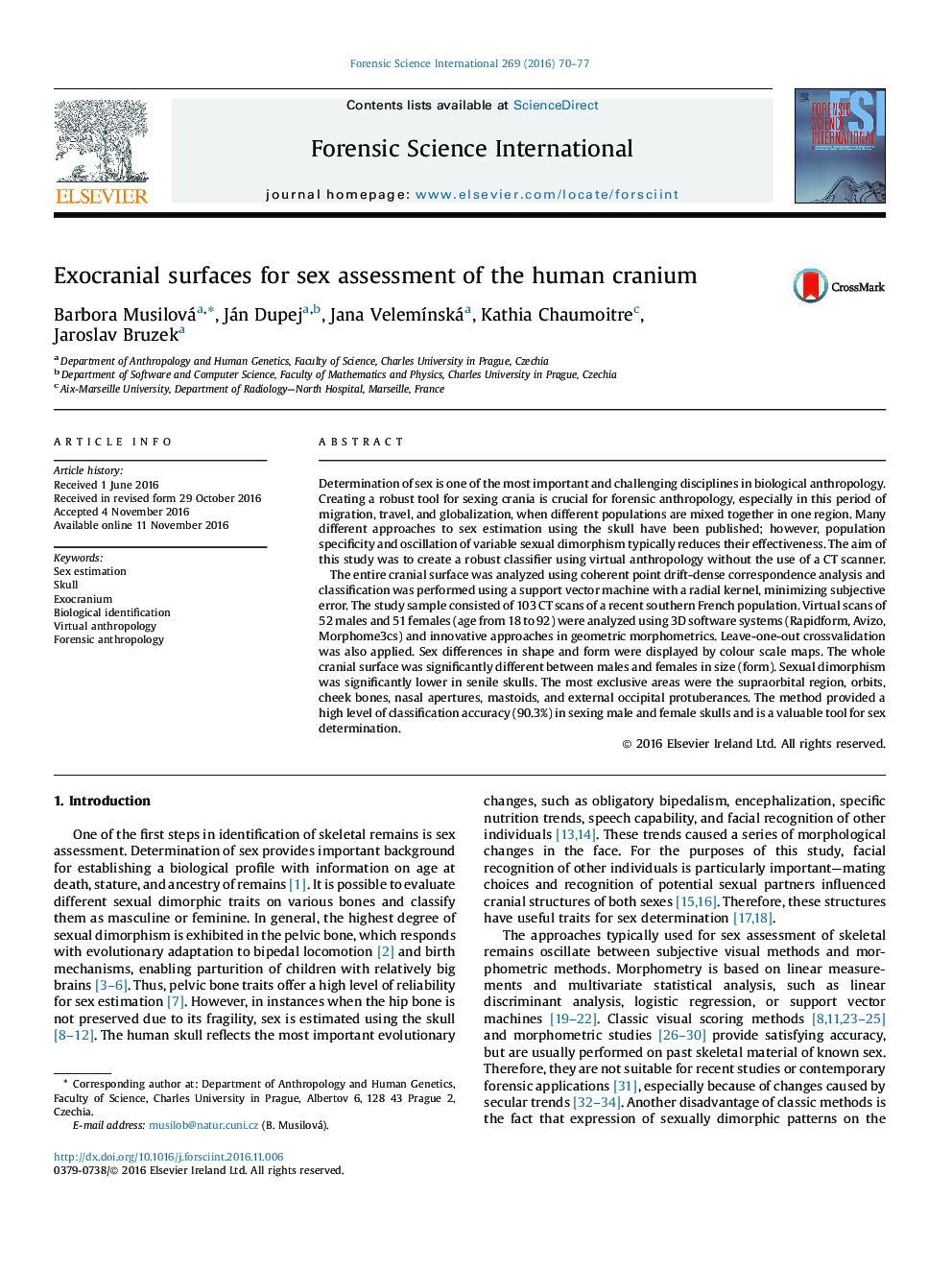| کد مقاله | کد نشریه | سال انتشار | مقاله انگلیسی | نسخه تمام متن |
|---|---|---|---|---|
| 4760365 | 1421981 | 2016 | 8 صفحه PDF | دانلود رایگان |

- We tested sex determination from exocranial meshes using an innovative approach.
- A quick and useful method for forensic casework or bioarcheology was introduced.
- Sexual dimorphism of a current European population was displayed.
- We found that sexual dimorphism of cranial form and shape diminished with age.
Determination of sex is one of the most important and challenging disciplines in biological anthropology. Creating a robust tool for sexing crania is crucial for forensic anthropology, especially in this period of migration, travel, and globalization, when different populations are mixed together in one region. Many different approaches to sex estimation using the skull have been published; however, population specificity and oscillation of variable sexual dimorphism typically reduces their effectiveness. The aim of this study was to create a robust classifier using virtual anthropology without the use of a CT scanner.The entire cranial surface was analyzed using coherent point drift-dense correspondence analysis and classification was performed using a support vector machine with a radial kernel, minimizing subjective error. The study sample consisted of 103 CT scans of a recent southern French population. Virtual scans of 52 males and 51 females (age from 18 to 92) were analyzed using 3D software systems (Rapidform, Avizo, Morphome3cs) and innovative approaches in geometric morphometrics. Leave-one-out crossvalidation was also applied. Sex differences in shape and form were displayed by colour scale maps. The whole cranial surface was significantly different between males and females in size (form). Sexual dimorphism was significantly lower in senile skulls. The most exclusive areas were the supraorbital region, orbits, cheek bones, nasal apertures, mastoids, and external occipital protuberances. The method provided a high level of classification accuracy (90.3%) in sexing male and female skulls and is a valuable tool for sex determination.
Journal: Forensic Science International - Volume 269, December 2016, Pages 70-77